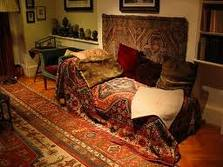 On July 17, 1990 President George H.W. Bush initiated the “Decade of the Brain” by making an official proclamation that began with these words:
On July 17, 1990 President George H.W. Bush initiated the “Decade of the Brain” by making an official proclamation that began with these words:
“The human brain, a 3-pound mass of interwoven nerve cells that controls our activity, is one of the most magnificent—and mysterious—wonders of creation. The seat of human intelligence, interpreter of senses, and controller of movement, this incredible organ continues to intrigue scientists and layman alike.”
Although the first President Bush disdained “the vision thing,” he had the foresight to recognize the immense value and national importance of a coordinated scientific effort to learn more about the workings of the brain.
The 1990’s produced a huge burst of neuroscientific research that revolutionized our understanding of human nature and generated several breakthroughs in the clinical treatment of brain injuries and diseases.
The Decade of the Brain also generated exciting new developments in the study of religion. For more than 100 years psychologists of religion have been investigating connections between brain activity and religious experience, going back to the pioneering efforts of William James, Sigmund Freud, and Carl Jung. Now, thanks to recent advances in neuroscience, researchers are using hi-tech imaging devices to study the brain’s activities during meditation and prayer, to identify neural correlates for empathy, gratitude, wonder, and self-awareness, and to investigate the human brain’s distinctive powers of imagination, a creative capacity celebrated by all religious faiths and spiritual traditions.
Alas, researchers have not found “the God spot” in the brain, and likely never will. But if we put that questionable goal aside, the Decade of the Brain was a boon for the psychological study of religion.
In his State of the Union Address on February 12th of this year, President Obama signaled his interest in launching a renewed collective effort to explore the nature of the human brain:
“Now, if we want to make the best products, we also have to invest in the best ideas. Every dollar we invested to map the human genome returned $140 to our economy — every dollar. Today, our scientists are mapping the human brain to unlock the answers to Alzheimer’s… Now is not the time to gut these job-creating investments in science and innovation. Now is the time to reach a level of research and development not seen since the height of the Space Race.”
According to a New York Times story by John Markoff on February 17, the Obama Administration is preparing to launch an ambitious plan called the “Brain Activity Map” that will coordinate efforts by governmental agencies, universities, and private foundations to create a more comprehensive understanding of the brain’s dynamic functioning. The impetus for the Brain Activity Map project is to devise better ways of studying the complex interactions among neurons all across the brain, not just in small isolated groups. Once we can understand the brain at that higher level of sophistication, the hope is we will find new clues to treating stroke victims and curing diseases like Parkinson’s and Alzheimer’s.
As the Brain Activity Map project goes forward, it will almost certainly benefit the psychology of religion. Many important features of religion (e.g., rituals, moral codes, symbol systems, conversion experiences, mystical revelations) involve a variety of psychological processes that are likely rooted in the interactions of multiple regions and systems in the brain. The more we learn about how the brain functions as a whole, the more we will learn about the psychological dimensions of religion.
And the more we will learn about dreams, a natural part of brain functioning that is also a source of religious interest and fascination all over the world. In a “Sunday Observer” column on February 23 for the New York Times titled “The Next Frontier Is Inside Your Brain,” Philip M. Boffey describes the exciting potentials of President Obama’s brain research initiative. Boffey points to neuroscientific research on dreams as an example of how the Brain Activity Map could spark the public’s imagination:
“Scientists have even determined what animals are dreaming by first having them walk through certain locations in a fixed order and recording which neurons are activated. Then when the animal is sleeping, they can see if the same neurons are firing in the same order, an indication that the animal is probably dreaming about the walking it had just done. This rather simple experiment involves putting electrodes in the brain to record perhaps 100 neurons at a time. To really understand what is happening when an individual dreams, scientists will need to record what happens to many thousands or possibly millions of neurons as the dream is unfolding.”
If the next decade of neuroscience can generate insights at this level of integrated detail, it bodes very well for the psychological study of dreams and all other forms of complex, multi-modal religious experience.
####
Note: This commentary was also published on the Huffington Post.

